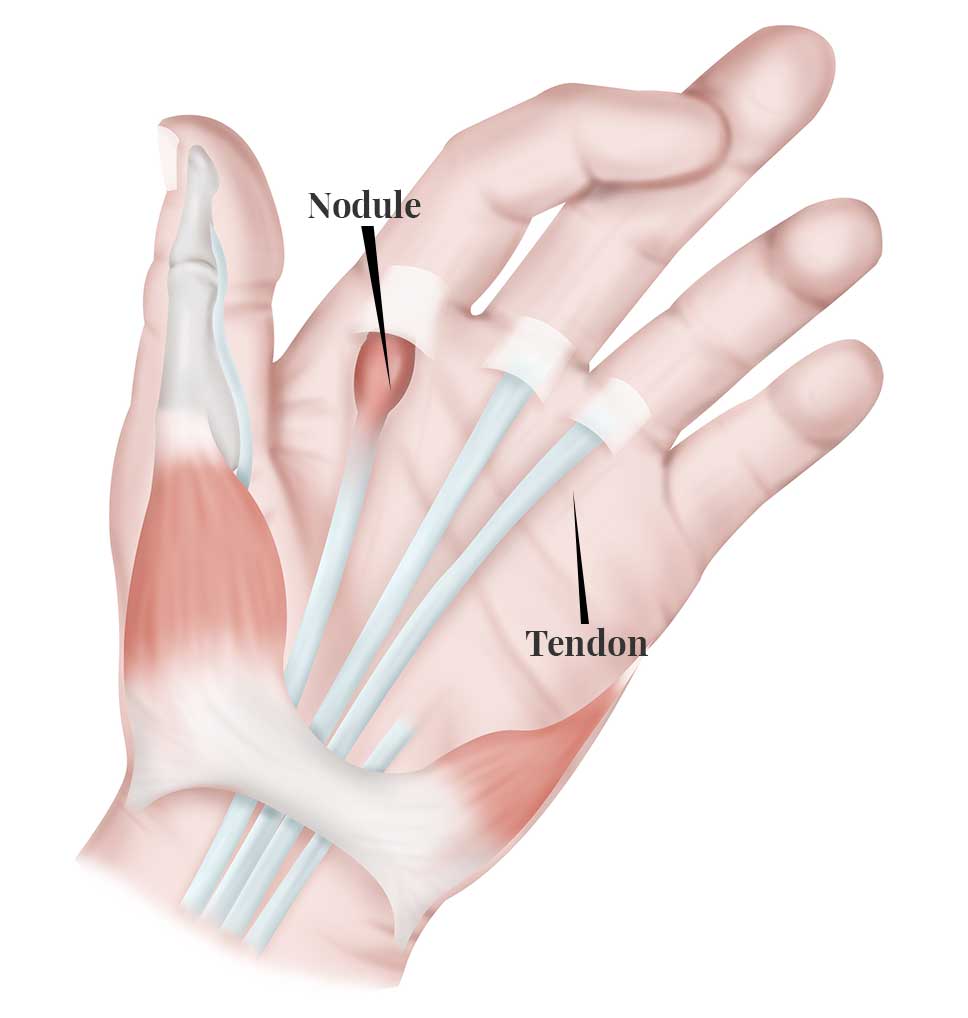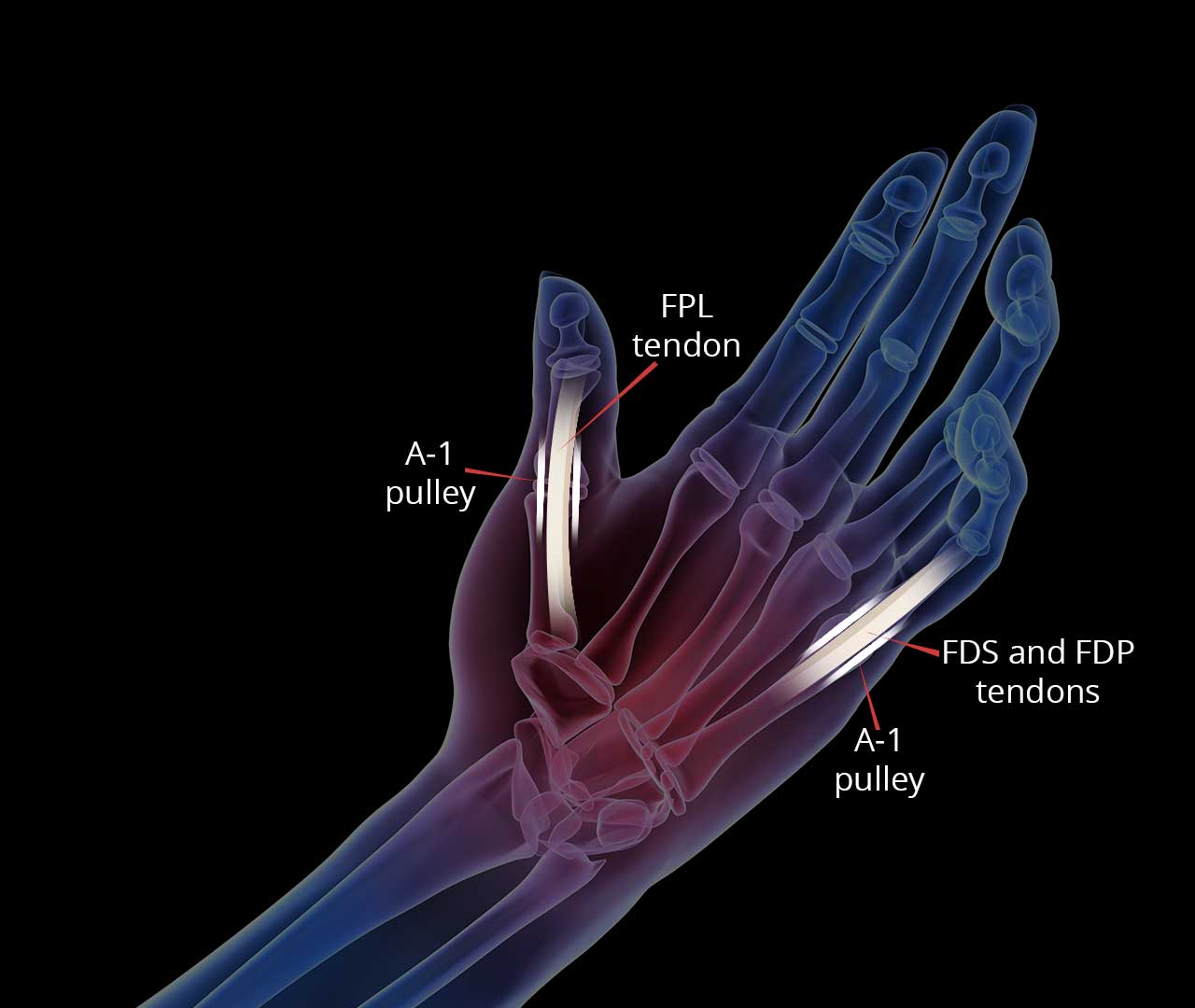What is trigger finger?
Trigger finger, also known as stenosing tenosynovitis, is a condition that refers to the clicking or locking of one or more of your fingers during movement, with or without pain. When your thumb is affected, the condition is called trigger thumb.
What causes trigger finger?
Trigger finger or trigger thumb usually occurs when there is a repeated or forceful movement of your fingers or thumb. The tendons that connect your muscles to the bones can become irritated and inflamed, causing bumps or nodules to form on the tendons.

What are the symptoms of trigger finger?
Symptoms of trigger finger tend to get worse in the morning when your fingers are still stiff from inactivity. You may also experience the following symptoms if you have trigger finger:
- Stiffness in your finger
- A popping or clicking sound when bending your finger
- Finger gets stuck in a bent position
- Soreness or bump around the base of your finger
If you experience these symptoms and they do not go away, make an appointment to get a diagnosis. Delaying your consultation may slow the healing process or lengthen your recovery time.
What are the risk factors for trigger finger?
Some people are more likely to develop trigger finger. These risk factors include:
- Women
- Ages between 40 and 60
- Metabolic disease such as diabetes, gout, inflammatory arthritis, thyroid disease
- Jobs that require excessive or repetitive finger and thumb movements
- Suffered injury to the palm or base of the finger or thumb
How is trigger finger diagnosed?
A physical examination is necessary to assess your hands and fingers for signs of swelling and other symptoms. These may include checking for lumps in your palm and your mobility in affected fingers.
X-rays or other imaging tests are typically not required to diagnose this condition.
What treatments are there for trigger finger?
Trigger finger treatment can range from rest to surgery, but it is typically non-surgical. The orthopaedic specialist may prescribe the following treatment depending on the diagnosis and severity of your condition:
Night splint for mild symptoms
If you experience stiffness after waking up in the morning, the orthopaedic specialist will suggest that you wear a night splint to keep your affected finger or thumb in a straight position.
Steroid injections and platelet rich plasma for frequent symptoms
If you experience symptoms frequently, such as pain with or without clicking during activity, steroid injections are effective in providing pain relief. Steroid injections are administered into the tendon sheath of your finger or thumb to relieve symptoms.
Symptoms may recur, ranging from weeks to months and may vary between individuals. Some common side effects of steroid injections include skin thinning, discolouration, recurrence, or allergy.
Platelet Rich Plasma (PRP) has also been tried in a small number of cases. The advantage of using PRP is that it is derived entirely from the patient’s blood and does not cause the typical side effects of steroids.
Surgery for troublesome clicking / locking
In some cases, the orthopaedic specialist will recommend surgery when non-surgical treatments do not help. Trigger finger surgery aims to restore the finger or thumb’s ability to bend without pain or stiffness.
There are two types of trigger finger surgery – open release and percutaneous release.
Open release
During open trigger finger release surgery, the orthopaedic specialist will make a small incision in the finger and cut the tendon sheath. The goal of this surgical procedure is to release the A-1 pulley that is blocking the tendon movement, and to ensure that the flexor tendon glides easily through the tendon sheath.

Percutaneous release (Needle)
Needle release is performed without the need for a skin incision. During this procedure, the orthopaedic specialist uses a needle to break up the tissue around the tendon sheath to improve mobility. However, there is a risk of incomplete release and tendon laceration that may require further interventions.

How long will it take for the trigger finger to recover after surgery?
Patients can expect mechanical relief immediately while it may take a few weeks for the pain to subside. Joint stiffness may still persist; in the case of locked digits or arthritis.
What will happen if a trigger finger is not treated?
Trigger finger can occur more frequently and become more painful as your symptoms advance. If left untreated, the affected finger or thumb may get permanently stuck in a bent position. This may complicate your daily tasks.
Should your symptoms persist, please consult an orthopaedic specialist on your treatment options.
Make an appointment
Make an appointment to consult an orthopaedic specialist. Select "Specialist Appointment". Under Specialist Appointment Details, select "Orthopaedic Surgery" or "Pain Management".
Make an enquiry. We will get back to you within 2 working days. You can reach us at 6311 2310.